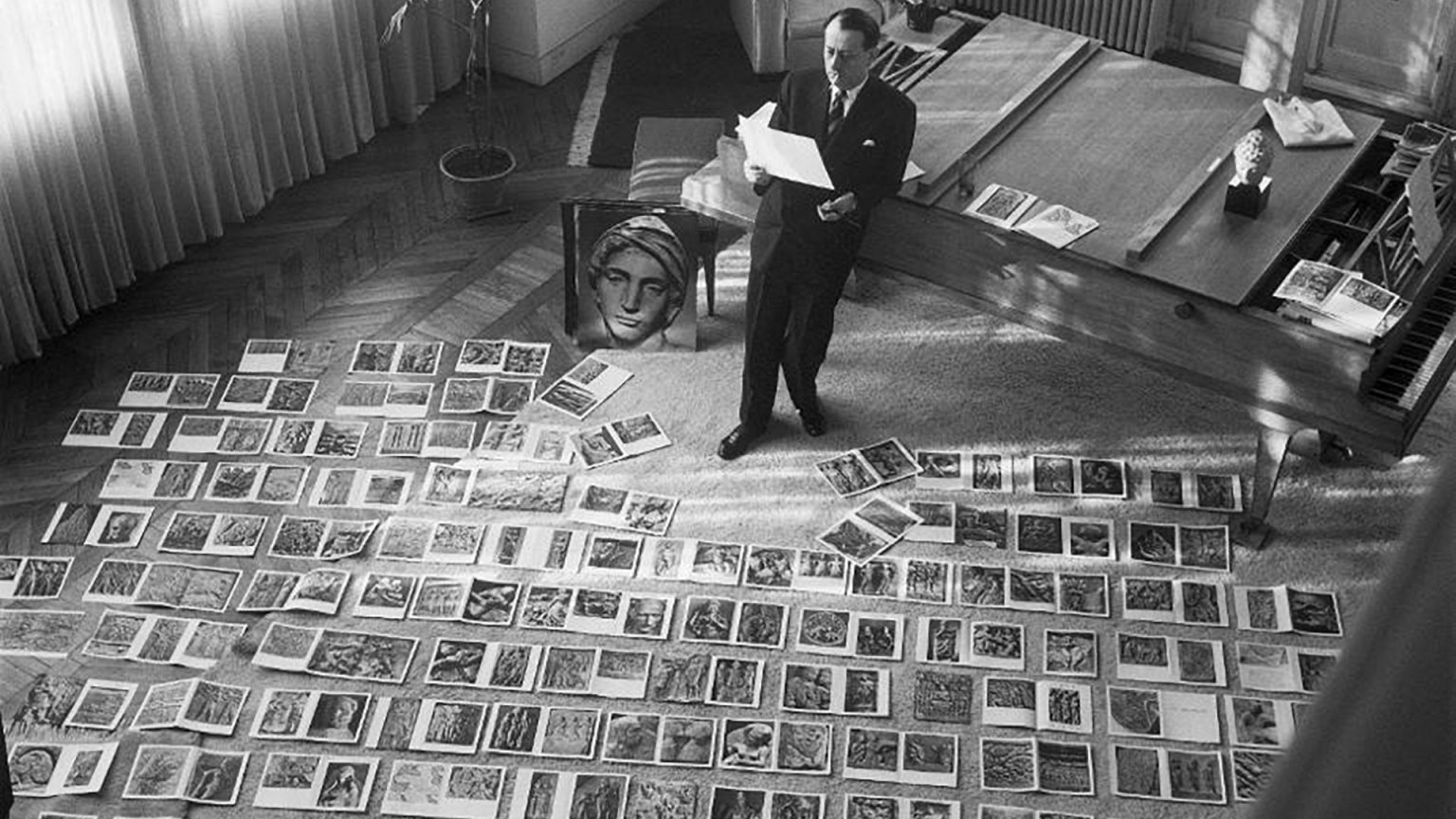ARCHIVES DE L’IMAGINAIRE

André Malraux chez lui, Le musée imaginaire, Maurice Jarnoux, 1953
☞ to the website
Imagination is the daily bread of every architect; it represents the moment in which dreams, and the ability to see beyond the confines of the state of necessary and contingent things, can prevail. The imaginative capacity is the most intimate and inscrutable part of every architect, the most difficult and delicate to teach but also that which is most central to talent. It is important to encourage it and to communicate the dreams and visions of the architectural repertoire. Imagination is a rebellious form of thought which follows neither fixed rules nor logical links. It has an intuitive capacity unsuited to confinement in an archive. Nevertheless, the ability to formulate images, to elaborate them, develop them and change them, is a precious faculty of consciousness. Depicting an imagined object is a fundamental act in the architectural project.
The representation of an architectural idea, besides defining the perceptible image of a real object through its figuration, can also reproduce, in a conscious, informed way, real situations or those on the border of pure fantasy, enriching the project with a visionary and idealist energy which pushes it to make progress and surpass itself. The architect capable of imagining knows how to ‘see with the eyes of the mind’, and can thus picture spaces and objects that express and communicate meanings other than those related to the pure necessity of their use and construction. Imagined architecture is made real by its depiction, that is, by its figurative representation. From the moment when the idea for a construction takes its form, the road to becoming architecture begins. The creative capacities of the human spirit can, in fact, define an architectural idea even in the absence of a concrete object of reference or of a tangible image of it to reproduce. When, though, the product of the imagination, however allegorical or symbolic it may be, however it may allude to a different reality, takes on the semblance of an architectural design, this can be conserved and communicated through a reproducible image. This is the strength of the architectural imagination, and its repertoire can be the most real of all the places in architectural culture.